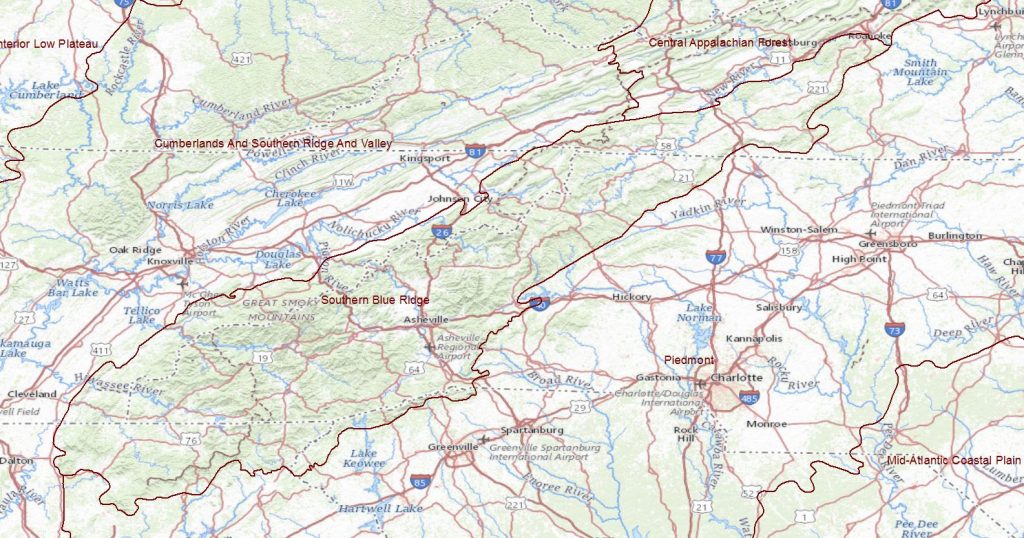The Southern Blue Ridge is one of the most biologically significant
ecoregions in the United States. Its 9.4 million acres spans portions of five states: Virginia, Tennessee, North Carolina, South Carolina, and Georgia.

The heterogeneity of the ecoregion’s geology and topography has resulted in a broad array of biodiversity. 136 natural terrestrial communities have been identified and over 90% of these are considered endemic or limited to the ecoregion. There are nearly 400 rare plant species while the forests are some of the most diverse in the U.S. The ecoregion is the center of the world’s salamander diversity and has the highest number of terrestrial snail species of any ecoregion in the U.S. The freshwater systems are exceptionally rich in species diversity, with 66 at-risk aquatic species occurring in the ecoregion, 20 of which are federally-listed as
threatened or endangered.
Click here for link to TNC’s Southern Blue Ridge Ecoregional Plan